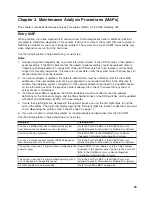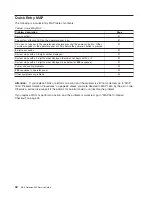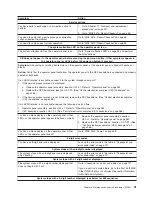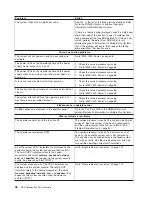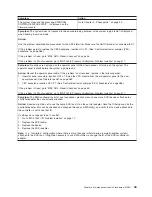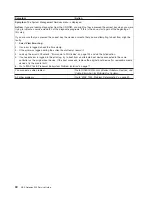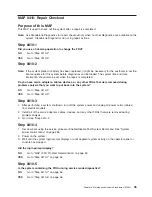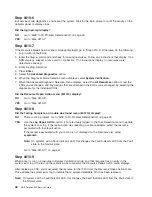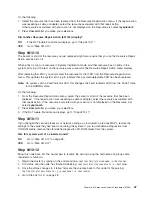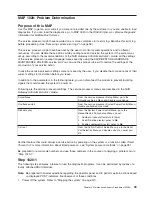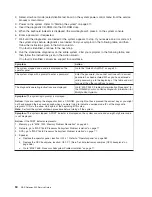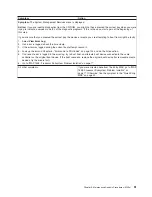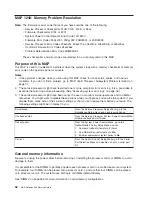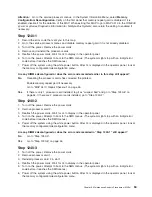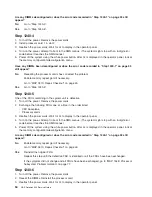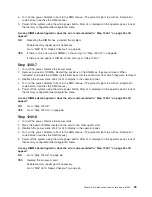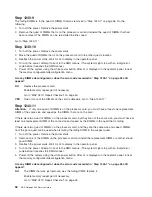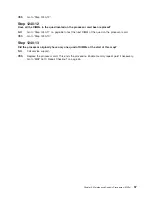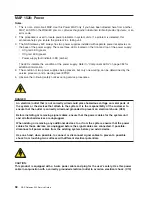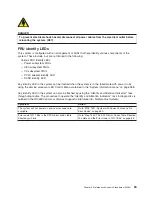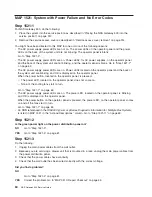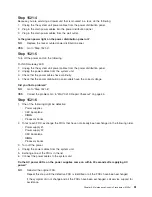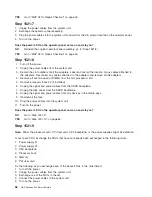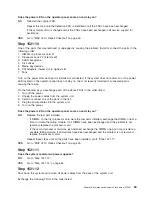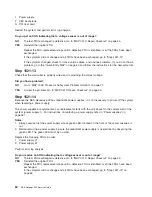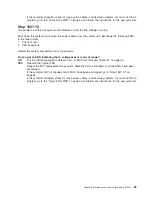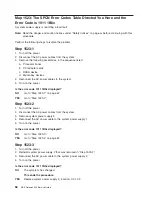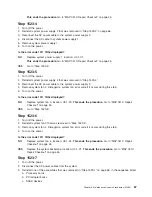
MAP 1240: Memory Problem Resolution
Note:
The firmware or error code that sent you here could be one of the following:
v
Service Processor Checkpoints 910B, 910C, 910E, or 95xx
v
Firmware Checkpoints E134 or E701
v
System Power Control Network Error Code 1011840C
v
Firmware Error Codes 25Cyy001, 25Cyy002, 25B00001, or 25B00004
v
Service Processor Error Codes 406x001x, 406x010x, 406x013x, 406x0CA6, or 450x30xx
v
Common Firmware Error Codes B1xx466x
v
Problem Determination Error Code M0MEM002
These checkpoints and error codes are referred to as
a memory code
in this MAP.
Purpose of this MAP
This MAP is used to troubleshoot a problem when the system stops with a memory checkpoint or memory
error code on the operator panel or console.
Notes:
1. If the symptom changes while you are using this MAP, check for loose cards, cables, and obvious
problems. If you do not find a problem, go to “MAP 1548: Processor Subsystem Problem Isolation” on
page 77.
2. The service processor might have recorded one or more symptoms in its error log. It is a good idea to
examine that error log before proceeding. (See “Accessing system error logs” on page 36.)
3. The service processor might have been set by the user to monitor service operations and to attempt
recoveries. You might want to disable these actions while you diagnose and service the system. If you
disable them, make note of their current settings so that you can restore them before you leave. The
following settings might be of interest to you.
Surveillance
From the Service Processor Setup Menu, go to the
Surveillance Setup menu and disable surveillance.
Unattended start
From the Service Processor System Power Control Menu,
disable unattended start mode.
Reboot policy
From the System Power Control Menu, go to the
Reboot/Restart Policy Setup Menu and set:
1. Number of reboot attempts to
0
(zero)
2. Use OS-Defined restart policy to
No
3. Enable supplemental restart policy to
No
Call out
From the Call-In/Call-Out Setup Menu, go to the Serial
Port Selection Menu and disable call-out on serial port
S2.
General memory information
Be sure to unplug the power cables before removing or installing the processor cards or DIMMs to avoid
damage to them.
It is acceptable for the DIMMs to partially populate each processor card in a multiprocessor card system.
For example, four DIMMs can be placed onto processor card 1, and another four DIMMs can be placed
onto processor card 2. The system uses both sets of DIMMs indiscriminately.
See “DIMMs” on page 346 for more information on valid memory configurations.
52
NAS Gateway 500 Service Guide
Summary of Contents for TotalStorage NAS Gateway 500
Page 1: ...IBM TotalStorage NAS Gateway 500 Service Guide GY27 0418 00 ...
Page 2: ......
Page 3: ...IBM TotalStorage NAS Gateway 500 Service Guide GY27 0418 00 ...
Page 16: ...xiv NAS Gateway 500 Service Guide ...
Page 20: ...xviii NAS Gateway 500 Service Guide ...
Page 36: ...System logic flow Note Not all components are supported 16 NAS Gateway 500 Service Guide ...
Page 52: ...32 NAS Gateway 500 Service Guide ...
Page 58: ...38 NAS Gateway 500 Service Guide ...
Page 112: ...92 NAS Gateway 500 Service Guide ...
Page 266: ...246 NAS Gateway 500 Service Guide ...
Page 326: ...306 NAS Gateway 500 Service Guide ...
Page 353: ...Chapter 11 Removal and replacement procedures 333 ...
Page 392: ...372 NAS Gateway 500 Service Guide ...
Page 402: ...382 NAS Gateway 500 Service Guide ...
Page 412: ...392 NAS Gateway 500 Service Guide ...
Page 440: ...420 NAS Gateway 500 Service Guide ...
Page 446: ...426 NAS Gateway 500 Service Guide ...
Page 448: ...428 NAS Gateway 500 Service Guide ...
Page 466: ...446 NAS Gateway 500 Service Guide ...
Page 469: ......
Page 470: ... Printed in U S A GY27 0418 00 ...
Page 471: ...Spine information IBM TotalStorage NAS Gateway 500 NAS Gateway 500 Service Guide GY27 0418 00 ...


